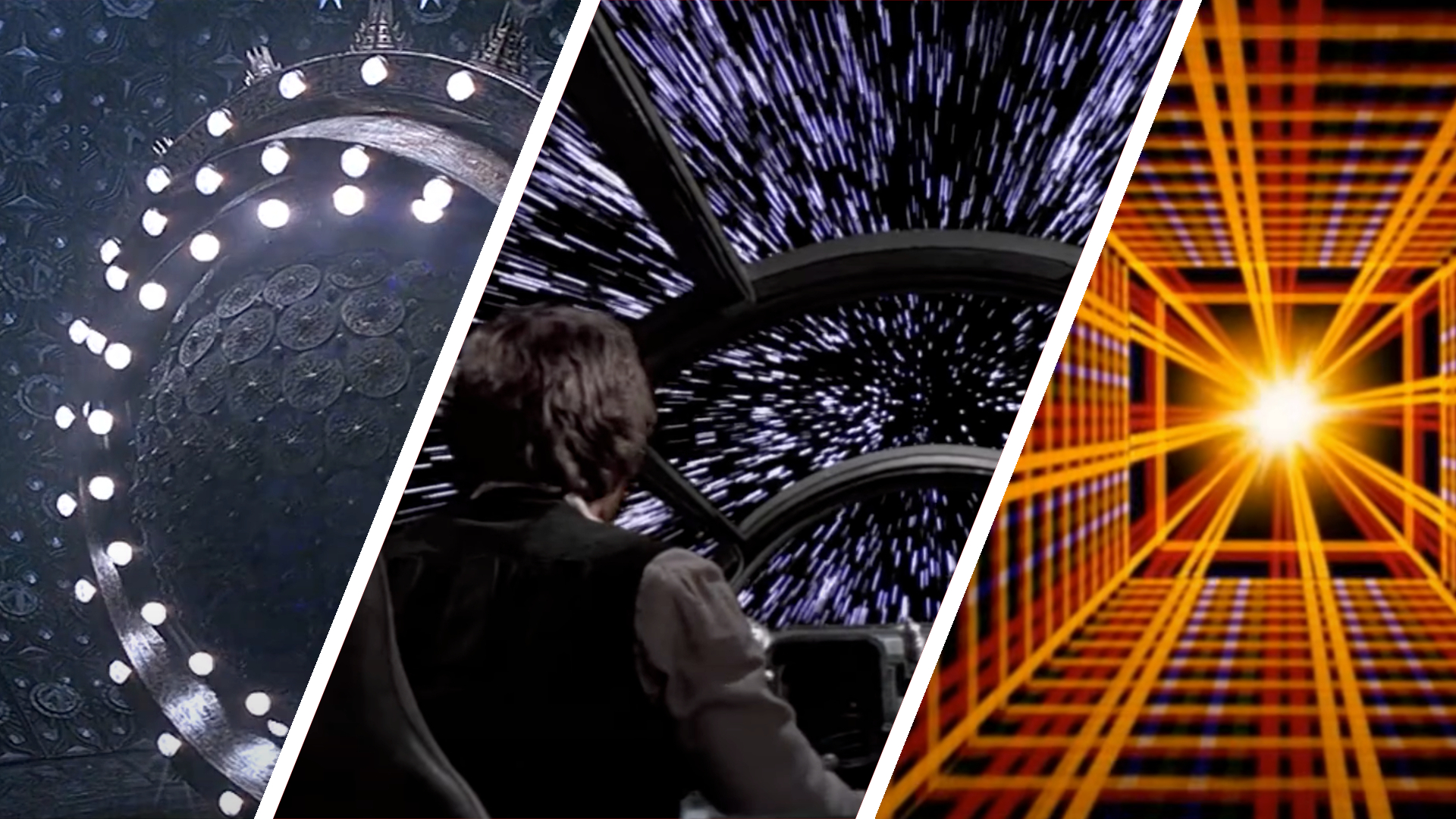GRAIL: NASA's Mission to Study the Gravity of the Moon
In 2011, NASA's Gravity Recovery and Interior Laboratory (GRAIL) mission sent a pair of washing-machine-size satellites into low lunar orbit for nearly a year. Thanks to the spacecraft's precise dance around the moon, scientists were able to create the highest-resolution gravity-field map ever made of any celestial body. The results revealed a wealth of never-before-seen lunar features in exquisite detail.
"Trying to understand how the moon formed, and how it evolved over its history, is one of the things we're trying to address with the GRAIL mission," Maria Zuber, principal investigator for GRAIL and a professor at the Massachusetts Institute of Technology, said in a statement before the mission launch. "But also, [we're] trying to understand how the moon is an example of how terrestrial planets in general have formed."
During their time in orbit around the moon, the spacecraft accomplished both of those goals.
A path of precision
The GRAIL mission consisted of two medium-size spacecraft that were almost identical. The handful of differences between the craft stemmed from the need for one satellite to fly in front of the other.
The spacecraft relied heavily on the success of the twin Earth-based Gravity Recovery and Climate Experiment (GRACE) spacecraft, which had launched about nine years earlier, in 2002, on a mission to study Earth's gravity. GRAIL's science payload was a simplified form of GRACE's, and the newer spacecraft's design was derived from the Lockheed Martin Experimental Small Satellite-11, which had launched in 2005.
The primary instrument on the two GRAIL spacecraft was the Lunar Gravity Ranging System (LGRS). The LGRS transmitted radio signals that precisely defined the distance between the two spacecraft. These signals allowed the spacecraft to accurately map the gravity of the lunar surface.
GRAIL was also NASA's first planetary mission to carry instruments fully dedicated to education and public outreach. Each spacecraft carried a small camera called a GRAIL MoonKAM (Moon Knowledge Acquired by Middle school students) that provided images and video of the lunar surface.
Thousands of students in the fifth through eighth grades selected target areas on the lunar surface and sent their requests to the MoonKAM Mission Operations Center in San Diego. Altogether, MoonKAM captured more than 115,000 total images of the lunar surface, all requested by middle school students from across the country.
Both GRAIL spacecraft launched Sept. 20, 2011, aboard a single Delta II Heavy rocket built by United Launch Alliance. Together, the pair weighed 1,600 lbs. (725 kilograms).
The spacecraft took 3.5 months to get to the moon, traveling along a path that reduced the spacecraft's fuel requirements and allowed more time to monitor the spacecraft and look for gas jetting from the lunar surface.
The GRAIL spacecraft approached the moon under the lunar south pole and then entered moon orbit — GRAIL-A on Dec. 31, 2011, and GRAIL-B on Jan. 1, 2012. The maneuvers placed the pair into a near-polar elliptical orbit that sent them around the moon once every 11.5 hours, though that eventually fell to just under 2 hours. By mid-January 2012, the GRAIL spacecraft received new names, thanks to a group of creative fourth-graders from Montana. "Ebb and Flow" was the winning entry in NASA's nationwide school-age contest to name the spacecraft.

GRAIL completed its primary mission ahead of schedule. From March 1, 2012, until May 29, 2012, the two spacecraft traveled in a low-altitude, polar lunar orbit only about 34 miles (55 kilometers) above the surface of the moon. During the extended mission, the average orbital height was 14 miles (23 km) above the lunar surface, placing the satellites within 5 miles (8 km) of some of the moon's higher surface features.
"If Ebb and Flow had feet, I think, by reflex, they'd want to pull them up every time they fly over a mountain," Joe Beerer, GRAIL's mission manager, said in a statement.
The pair took a brief break, powering off between May 29 and Aug. 30, 2012, to avoid the anticipated lunar eclipse of June 4 of that year, when a revised orbit kept them from collecting solar power.
"Before launch, we planned for all of GRAIL's primary mission science to occur between lunar eclipses," David Lehman, project manager of GRAIL from NASA's Jet Propulsion Laboratory, said in a statement.
GRAIL's extended mission ran from Aug. 30 until Dec. 17, 2012, when the spacecraft was deliberately crashed into the lunar surface.
Mapping the moon
GRAIL's primary mission objectives were to determine the structure of the lunar interior from crust to core and to advance understanding of the thermal history of the moon. To do this, the twin spacecraft created an incredibly high-resolution gravity-field map of the lunar surface.
As Ebb and Flow traveled over areas with greater or lesser gravity caused by visible and hidden features, the distance between the two spacecraft changed ever so slightly — about one-tenth of a micron, or just over half the size of a red blood cell.
"The GRAIL twins [could] detect a change in their position down to one half of a human hair," NASA said in a statement.
The precise changes in position allowed the spacecraft to make a in-depth map of how the moon's gravitational tug changed as they flew over the surface.
These changes revealed the gravitational effects of not only known mountains and craters, but also mascons. Mascons are regions of a planet or moon's crust that contain excess positive gravity anomalies, indicating the presence of extra mass in the region. The origin of mascons has been a mystery since their discovery in 1968, though researchers generally agree that they result from ancient impacts billions of years ago.
"GRAIL data confirm that lunar mascons were generated when large asteroids or comets impacted the ancient moon, when its interior was much hotter than it is now," Jay Melosh, a GRAIL co-investigator at Purdue University, said in a statement. GRAIL's map also revealed an abundance of features that had never been seen in detail, such as tectonic structures, volcanic landforms, basin rings, the central peaks of craters and numerous simple, bowl-shaped craters. GRAIL also revealed that the moon's gravity field is unlike that of any terrestrial planet in the solar system, NASA said.
"What this map tells us is that, more than any other celestial body we know of, the moon wears its gravity field on its sleeve," Zuber said. "When we see a notable change in the gravity field, we can sync up this change with surface topography features such as craters, rilles or mountains."
According to Zuber, the moon's gravity field acts as a record of the storm of impacts that once bombarded all terrestrial planetary bodies. This field also reveals evidence for the fracturing of the lunar interior, which extends to the deep crust and possibly the mantle.

Ebb and Flow revealed that the density of the lunar highland crust is substantially lower than generally assumed, which agrees with the data obtained during the final Apollo missions in the early 1970s. This suggests that the moon-rock samples brought back to Earth by the Apollo astronauts are characteristic of global rather than regional processes.
GRAIL also found that the average thickness of the lunar crust is about 6 to 12 miles (10 to 20 km) thinner than previously thought — between 21 and 27 miles (34 and 43 km).
"With this crustal thickness, the bulk composition of the moon is similar to that of Earth," Mark Wieczorek, GRAIL co-investigator at the Institut de Physique du Globe de Paris, said in a statement. "This supports models where the moon is derived from Earth materials that were ejected during a giant impact event early in solar system history."
GRAIL also revealed the origin of a craggy outline of the lunar surface known as Oceanus Procellarum, or the Ocean of Storms. Early theories suggested that an asteroid impact created the region. However, GRAIL found evidence that the Ocean of Storms is a rectangular region stretching roughly 1,600 miles (2,600 km) across that actually resulted from the formation of ancient rift valleys. As the lunar surface here cooled and contracted, it pulled away from its surroundings, creating large-scale fractures similar to the cracks that form in mud as it dries out.
"The rectangular pattern of gravity anomalies was completely unexpected," Jeff Andrews-Hanna, a GRAIL co-investigator at the Colorado School of Mines in Golden, Colorado, and lead author of the paper, said in a statement. "We can now clearly and completely see structures that were only hinted at by surface observations."
The end of a mission
GRAIL's mission ended as the two spacecraft ran out of fuel. The team decided to send the pair out in a blaze of glory, deliberately crashing them into the moon's surface with the hope of revealing more about the lunar composition upon impact.
But before the collision, GRAIL completed one last experiment. Fifty minutes prior to the Dec. 17, 2012, impact, the two spacecraft fired their engines until their propellant was depleted, a maneuver designed to precisely determine the amount of fuel remaining in the tanks. This final act helped NASA engineers validate computer models and improve predictions of fuel needs for future missions.
Because the moon is about 236,000 miles (380 km) away from Earth, it would have been a challenge to observe GRAIL's impact plumes from our planet. So, three weeks before the scheduled impact, GRAIL researchers contacted NASA's Lunar Reconnaissance Orbiter (LRO) team, which was also studying the moon.
The LRO team scrambled to get its orbiter in place to witness GRAIL's fiery demise. When Ebb and Flow crashed into the surface, LRO was only about 100 miles (160 km) from the lunar surface. Because the crash site was in the shadows, the team had to wait for the plumes to rise high enough to be visible in the sunlight. LRO's instruments revealed mercury and hydrogen in the plume.

Ebb's and Flow's resting places are both relatively small, only about 13 to 20 feet (4 to 6 meters) in diameter. The material blown up by the impacts created unusual dark patterns on the moon's surface.
"Fresh impact craters on the moon are typically bright, but these may be dark due to spacecraft material being mixed with the ejecta," LRO team member Mark Robinson, of Arizona State University, said in a statement.
Both impact sites lie on the southern stope of an unnamed mountain and are about 7,218 feet (2,200 m) apart. Ebb slammed into the ground about 30 seconds before Flow, which created its crater to the west and north of its twin.
Not long after the pair's demise, their craters were named in honor of former astronaut and GRAIL team leader, Sally Ride, who passed away in July of 2012 while the mission was in progress.
"Sally was all about getting the job done, whether it be in exploring space, inspiring the next generation or helping make the GRAIL mission the resounding success it is today," Zuber said in a statement. "As we complete our lunar mission, we are proud we can honor Sally Ride's contributions by naming this corner of the moon after her."
Over its 15-month mission, GRAIL improved our understanding of the moon, taking some of the steps necessary for eventually bringing humans back to the lunar surface.
"As NASA moves forward with exploration endeavors, our lunar science missions will be the light buoy leading the path for future human activities," Jim Green, then-director of the Planetary Science Division, Science Mission Directorate, in Washington, D.C., said in a statement.
Additional resources:
- Read more about the GRAIL Mission from the European Space Agency.
- Check out the before and after images of GRAIL's impact site on the lunar surface.
- Watch: GRAIL Mission Returns First Video of Moon's Far Side.
Join our Space Forums to keep talking space on the latest missions, night sky and more! And if you have a news tip, correction or comment, let us know at: community@space.com.
Get the Space.com Newsletter
Breaking space news, the latest updates on rocket launches, skywatching events and more!

Nola Taylor Tillman is a contributing writer for Space.com. She loves all things space and astronomy-related, and enjoys the opportunity to learn more. She has a Bachelor’s degree in English and Astrophysics from Agnes Scott college and served as an intern at Sky & Telescope magazine. In her free time, she homeschools her four children. Follow her on Twitter at @NolaTRedd










